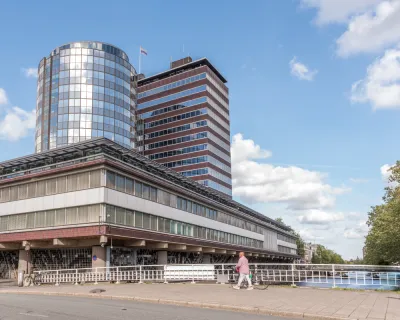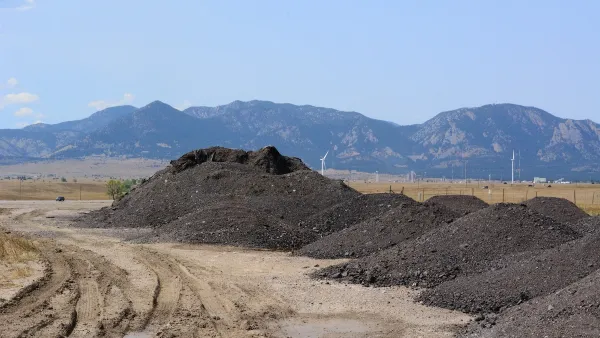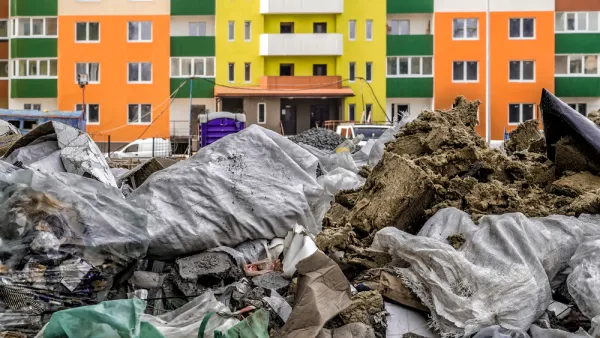The circular economy. Cradle-to-cradle. The regenerative economy. Whatever you call it, an approach to building that eliminates waste would transform the next generation of the built environment.

For as long as they exist, buildings of all sizes and shapes have always required a huge share of resources. Unfortunately buildings don't last forever, so they have always also produced a tremendous amount of waste.
"Typically, the fate of a building that has outlasted its usefulness is demolition, leaving behind a huge pile of waste, writes Jessica Camille Aguirre in a feature article for the New York Times.
With the planet plunging further into an environmental crisis, some designers are pushing for the building industry to adopt the tenants of the circular economy, also known as the regenerative or doughnut economy, as explained by Aguirre: "First, on a planet with limited resources and a rapidly warming climate, it’s crazy to throw stuff away; second, products should be designed with reuse in mind."
The article hinges on the example of a Dutch environmental engineer named Michel Baars, who leads a company disassembling a building known as the cigarette lighter in Amsterdam. The cigarette lighter is easier to disassemble and recycle now, according to the article, because the building was prefabricated and assembled in increments. European examples of the circular economy for building and design are in plentiful supply, but there are also U.S. cities setting policy in front of the curve. "In recent years, concern about waste and the climate has led cities like Portland, Ore., and Milwaukee to pass ordinances requiring certain houses to be deconstructed rather than demolished," reports Aguirre.
More details on the leaders in the cradle-to-cradle design, manufacture, and construction of the built environment, can be read at the source article, below, with numerous examples beyond and related to the work of Mr. Baars. The article also concludes with a survey asking readers to describe their relationship with recycling.
FULL STORY: How to Recycle a 14-Story Office Tower

National Parks Layoffs Will Cause Communities to Lose Billions
Thousands of essential park workers were laid off this week, just before the busy spring break season.

Retro-silient?: America’s First “Eco-burb,” The Woodlands Turns 50
A master-planned community north of Houston offers lessons on green infrastructure and resilient design, but falls short of its founder’s lofty affordability and walkability goals.

Delivering for America Plan Will Downgrade Mail Service in at Least 49.5 Percent of Zip Codes
Republican and Democrat lawmakers criticize the plan for its disproportionate negative impact on rural communities.

Test News Post 1
This is a summary

Test News Headline 46
Test for the image on the front page.

Balancing Bombs and Butterflies: How the National Guard Protects a Rare Species
The National Guard at Fort Indiantown Gap uses GIS technology and land management strategies to balance military training with conservation efforts, ensuring the survival of the rare eastern regal fritillary butterfly.
Urban Design for Planners 1: Software Tools
This six-course series explores essential urban design concepts using open source software and equips planners with the tools they need to participate fully in the urban design process.
Planning for Universal Design
Learn the tools for implementing Universal Design in planning regulations.
EMC Planning Group, Inc.
Planetizen
Planetizen
Mpact (formerly Rail~Volution)
Great Falls Development Authority, Inc.
HUDs Office of Policy Development and Research
NYU Wagner Graduate School of Public Service





























